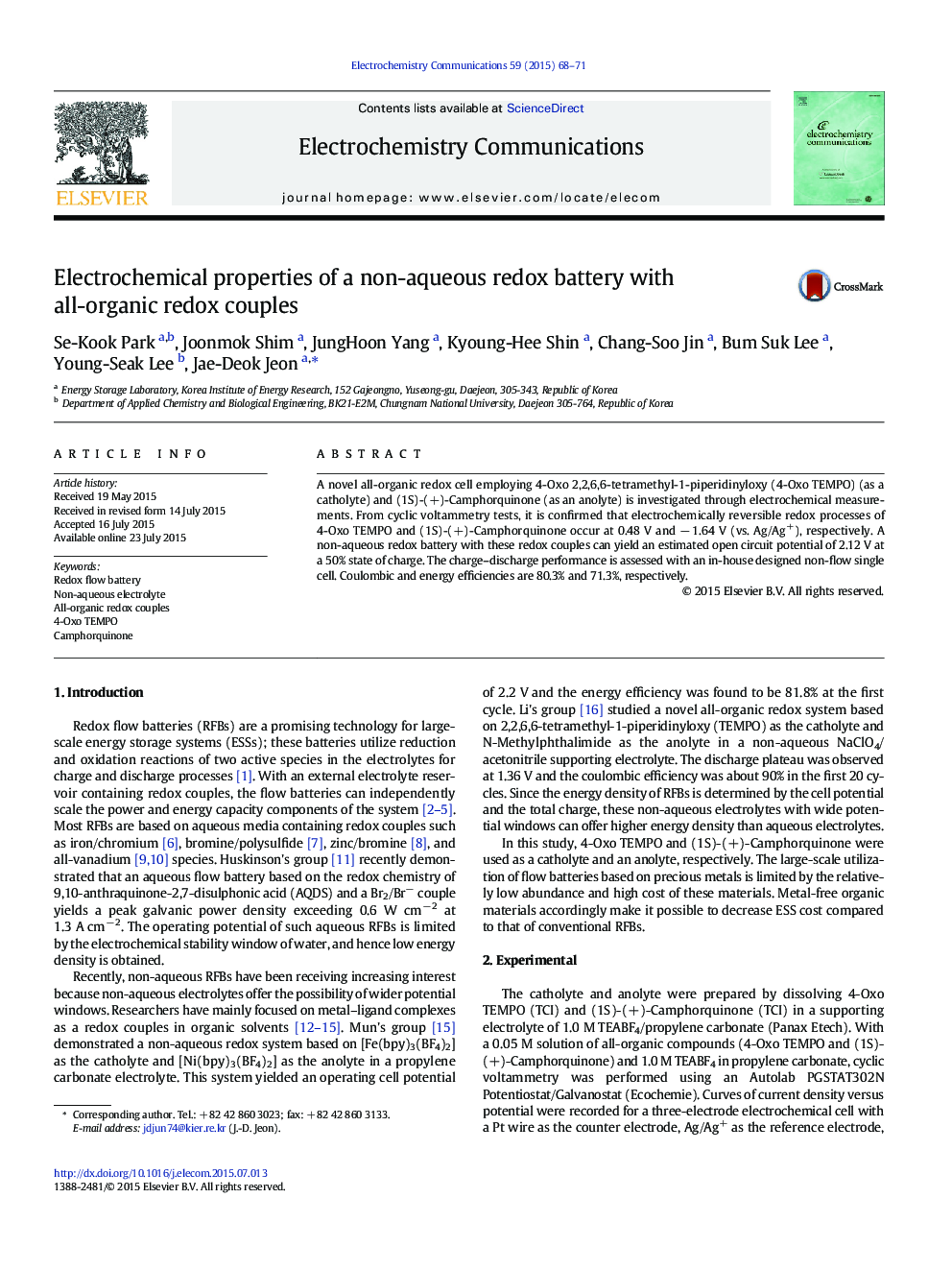| Article ID | Journal | Published Year | Pages | File Type |
|---|---|---|---|---|
| 178867 | Electrochemistry Communications | 2015 | 4 Pages |
•The all-organic redox cell was investigated using electrochemical measurements.•4-Oxo TEMPO was used as catholyte in the TEABF4/PC.•(1S)-(+)-Camphorquinone was used as anolyte in the TEABF4/PC.•The energy efficiency of a non-aqueous redox battery was 71.3% at the third cycle.
A novel all-organic redox cell employing 4-Oxo 2,2,6,6-tetramethyl-1-piperidinyloxy (4-Oxo TEMPO) (as a catholyte) and (1S)-(+)-Camphorquinone (as an anolyte) is investigated through electrochemical measurements. From cyclic voltammetry tests, it is confirmed that electrochemically reversible redox processes of 4-Oxo TEMPO and (1S)-(+)-Camphorquinone occur at 0.48 V and − 1.64 V (vs. Ag/Ag+), respectively. A non-aqueous redox battery with these redox couples can yield an estimated open circuit potential of 2.12 V at a 50% state of charge. The charge–discharge performance is assessed with an in-house designed non-flow single cell. Coulombic and energy efficiencies are 80.3% and 71.3%, respectively.
